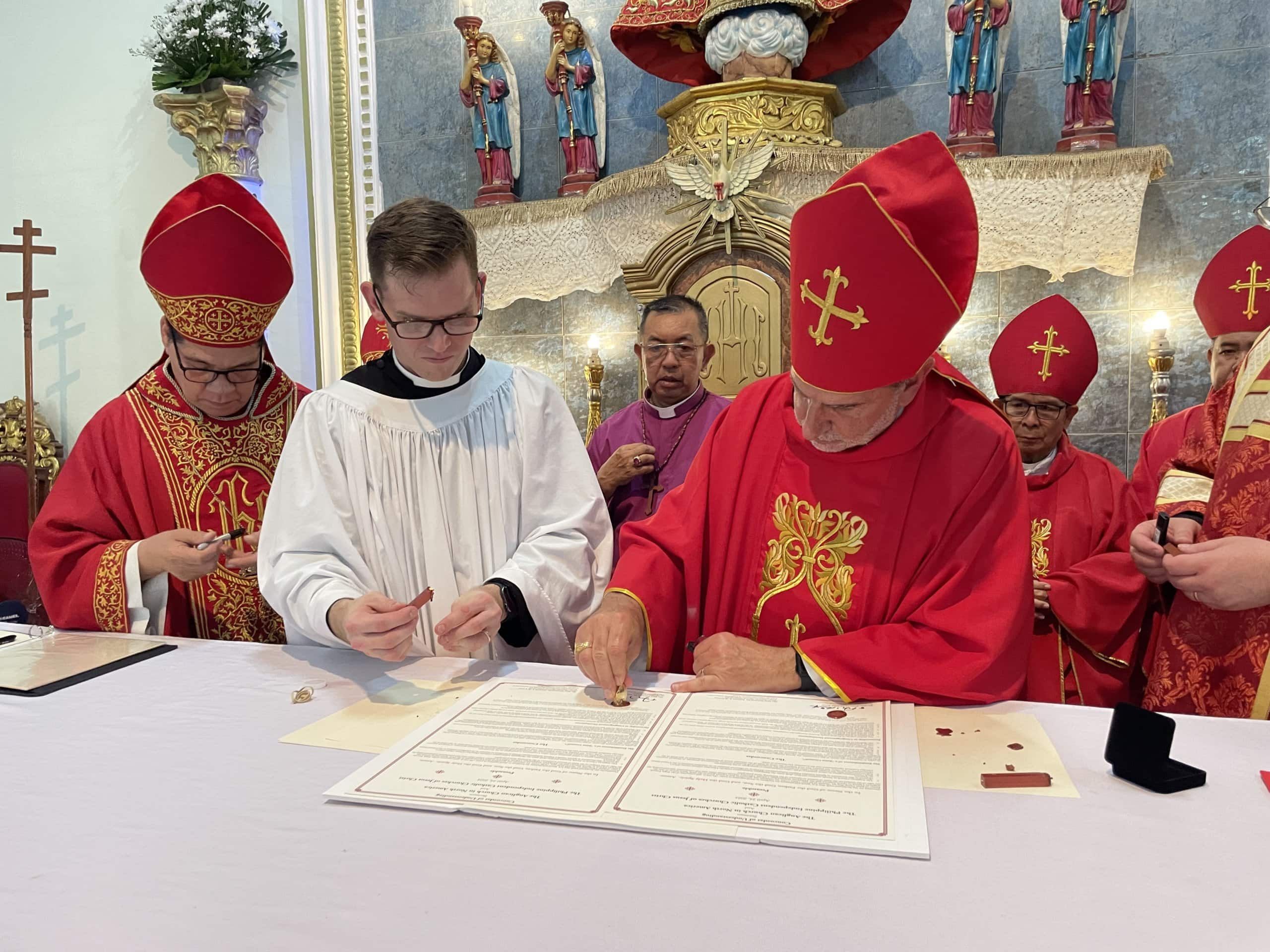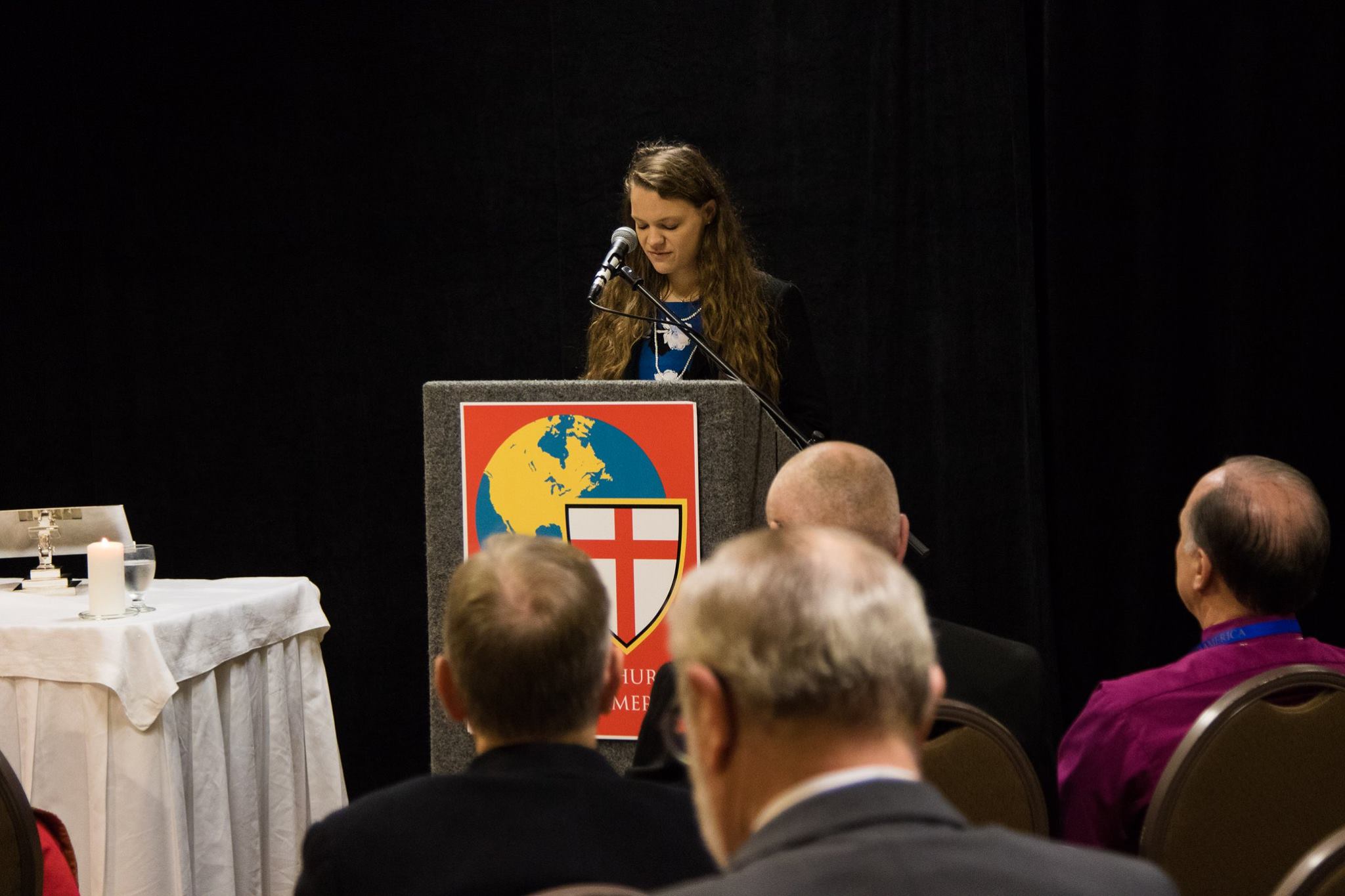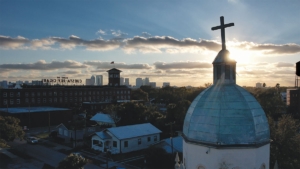
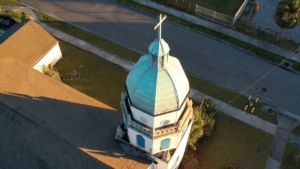
“This church building is in the middle of a very walkable neighborhood,” said the Rev. Travis Lowe, church planter for Trinity Anglican. “And so we have a number of people – now that we’ve moved in – who just walk to church. They live around the corner and this church is the neighborhood church for them.”
In walking the streets of Ybor City, it is clear that the multiethnic residents from a century ago have been replaced by Black and Latino communities. For this reason, Travis and his wife, co-church planter, Rev. Mical “Mickey” Lowe, have embarked on planting a bilingual church in English and Spanish.
What is even more interesting is how the provision of the church building came along in close tandem from the very outset with the first gatherings of the church body – it was a clear case of God’s provision.
 Travis had grown up in the Episcopal Church and Mickey had grown up in the Assemblies of God in both Argentina and the U.S. Of their journey, Mickey said, “He and I both met at an evangelical church. So that’s kind of what brought us together, but with these different backgrounds, he got to see my side of my upbringing and I got to see his. When I discovered the liturgical background that he had grown up with I was like, ‘This is it!’ This is a piece of what I feel like had always been missing. And so we always talked about what it would look like for a church to exist that had all three things: that was evangelical, charismatic, and liturgical, and we didn’t know that that existed until we started diving deeper into the Anglican world.”
Travis had grown up in the Episcopal Church and Mickey had grown up in the Assemblies of God in both Argentina and the U.S. Of their journey, Mickey said, “He and I both met at an evangelical church. So that’s kind of what brought us together, but with these different backgrounds, he got to see my side of my upbringing and I got to see his. When I discovered the liturgical background that he had grown up with I was like, ‘This is it!’ This is a piece of what I feel like had always been missing. And so we always talked about what it would look like for a church to exist that had all three things: that was evangelical, charismatic, and liturgical, and we didn’t know that that existed until we started diving deeper into the Anglican world.”
After a year and a half period of church planting discernment and evaluation with the diocese, Churches For the Sake of Others, they felt God leading them to the western part of Tampa called the Ybor City area. As an ordained clergy, Travis continues to work in a local coffee-shop wearing his clergy collar. As a result, Travis knows all the baristas within a ten-mile radius.
Travis reflected that people are seeing meetings being held in the coffee shop and that, “We were not just here in the city because it looked good in Instagram pictures, but we were actually part of the life of the city. I’m a huge theology nerd and so apart from having some checks in my life, I could just sit and hole myself up with my books and I could preach a whole homily. That’s nothing but sort of ethereal high-level doctrine, but the fact that we just have people from our community here has forced me to say, ‘OK. I’m preaching on the baptism of Jesus. What does this mean for them? Because I’m going to see them at the coffee shop or in the neighborhood. What do I want them to do with the baptism of Jesus? How do I want that to change their walk with the Lord?’” 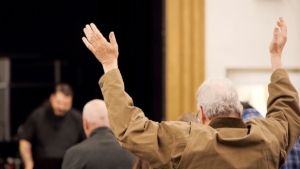
Theology that has deep waters and everyday practicality is important to Travis; he feels that this resonates with the people at his church. As Travis and Mickey began the transition from the church planting discernment period to form Trinity Anglican, a couple who knew about Travis’ preaching and Mickey’s gift in leading worship, approached them with an offer to give them $1,000,000 towards the purchase of a church building.
“At the time, we hadn’t done anything. And so, it was sort of like Field of Dreams, if you buy it, they will come. We didn’t and that was super wise. And so, we asked them, ‘Could you hold on to that [money] because we don’t want to buy a church before we know if anybody will come to this or not.’ And they said, ‘Sure,’ and helped us pay for the lease at the space we rented in 2022.” Amazingly, the couple still committed to them at the price they originally offered if the Trinity Anglican group could find a church building in that range.
In the summer of 2022, they found the Ybor City church building, but right at the top of the price range. The church was in disrepair and needed a lot of work, so they offered the seller about $200,000 under the asking price and that offer was accepted! Renovations have been done along with a lot of sweat equity, but these are only just the beginning. A church and building home was established within roughly the span of a year, and the bones are good! Praise God! 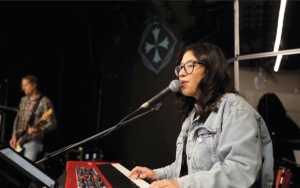
“Essentially, church planting is what led my family to move here to the States. So, it’s kind of always been a part of my story,” said Mickey. When you combine Mickey’s church planting, Latino culture and language background, experience coordinating church volunteers, and leading worship in music, it’s easy to understand why she would say, “I feel as though, you know, the Lord had been orchestrating that since the beginning…I’m just so grateful too for that gift.”
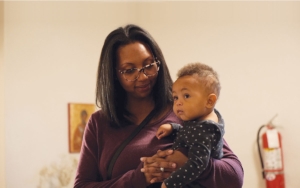
Trinity tries to hold as much of their service as they can in both languages, but it is not fully bilingual. The Scripture readings are in Spanish, the Call for Purity is in both languages, the songs are a mix, and the sermon is in English. “A long-term goal for us is to have the technology to be able to translate in real-time and interpret via earpieces,” said Mickey.
But Travis explains that the Latino culture is not the only one represented: “We draw people from kind of a wide spectrum of different cultures and ethnicities. We have a lot of people who are coming from metal and punk and hardcore music subcultures. I grew up in that, and so it’s been fun to see the friends that I grew up with doing mosh pits, now celebrating Eucharist and reciting the Creed, which has been pretty amazing.”
 For Southwest Florida, even in January, it was an unusually cold day – hovering over freezing around 36 degrees – there was reason to believe that the attendance would be a little lower than the roughly 75 people who showed up. It did not hurt that some of those who made the excellent, hot coffee for the shivering Floridians entering, were experienced baristas. When asked about why the church appeared to be getting traction so quickly Travis said, “I think there is a hunger for Christianity that’s not performative or even entertainment-driven but has substance to it. So being able to anchor our liturgy and our worship in the historic Christian tradition and say, ‘Hey, you know we say the Sursum Corda before Eucharist because we trace that back to the Fathers, and we’re not just doing this because we made it up in our living room and thought it was cool.’ This has a history and a lineage to it that’s resonated with a lot of people. We’ve seen a lot of people who grew up in church, who’ve maybe become jaded on church, and who are rediscovering their faith afresh as they encounter the ancient faith as it’s expressed in Anglicanism.”
For Southwest Florida, even in January, it was an unusually cold day – hovering over freezing around 36 degrees – there was reason to believe that the attendance would be a little lower than the roughly 75 people who showed up. It did not hurt that some of those who made the excellent, hot coffee for the shivering Floridians entering, were experienced baristas. When asked about why the church appeared to be getting traction so quickly Travis said, “I think there is a hunger for Christianity that’s not performative or even entertainment-driven but has substance to it. So being able to anchor our liturgy and our worship in the historic Christian tradition and say, ‘Hey, you know we say the Sursum Corda before Eucharist because we trace that back to the Fathers, and we’re not just doing this because we made it up in our living room and thought it was cool.’ This has a history and a lineage to it that’s resonated with a lot of people. We’ve seen a lot of people who grew up in church, who’ve maybe become jaded on church, and who are rediscovering their faith afresh as they encounter the ancient faith as it’s expressed in Anglicanism.”
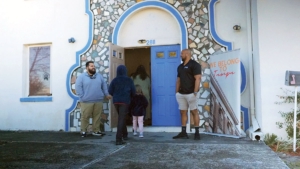 Outside of the entrance to the church stood a burly, bearded man named Alberto Santiago. Keeping his hands in his pockets to stay warm except to greet and welcome people, he explained his excitement since being a part of the launch in April of 2022: “I do see more people coming in again and again. I do see the Lord’s love just flourishing in the building and how He’s blessed us with the building. I just love seeing the community, and you can hear it inside – you can hear the laughs…I can’t wait to see it grow more.”
Outside of the entrance to the church stood a burly, bearded man named Alberto Santiago. Keeping his hands in his pockets to stay warm except to greet and welcome people, he explained his excitement since being a part of the launch in April of 2022: “I do see more people coming in again and again. I do see the Lord’s love just flourishing in the building and how He’s blessed us with the building. I just love seeing the community, and you can hear it inside – you can hear the laughs…I can’t wait to see it grow more.”
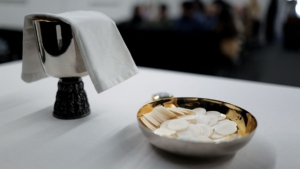 Another man, Jordan Beasley, said that he started coming because the liturgy drew him. He found it to be grounding and, “I liked the fact that it was so participatory. We’re not just here to watch. Not everyone can be upfront on the worship team.”
Another man, Jordan Beasley, said that he started coming because the liturgy drew him. He found it to be grounding and, “I liked the fact that it was so participatory. We’re not just here to watch. Not everyone can be upfront on the worship team.”
The church appears to just be warming up as community members are only beginning to realize that new life has been breathed back into the building. One gentleman stopped his car in the middle of the street, got out, and approached Travis. He was African-American and began to tell Travis about how he grew up in the neighborhood and had memories of when the church was alive and active. He wondered what was going on and asked if he could visit sometime.
On close examination, the church’s edifice and steeple have a long way to go in renovation. “The next big thing for us,” Travis said, “and it’s not a fun thing, but we know we’re going to have to do it – is the roof. It’s one of those big expenses that you don’t have a lot to show for other than it’s not going to leak anymore.”
Indeed, there is hardly a corner of the church that does not need some kind of attention. Travis’ sermon that day focused on the life of Peter, with all of his warts and rough edges; how Jesus did not look at how he was, but what he will become in the future. It appears that Travis, Mickey, and the congregation are looking at the Ybor City neighborhood in the same way, and like the building, they are seeing the potential for a return to a vibrancy from years gone by.


